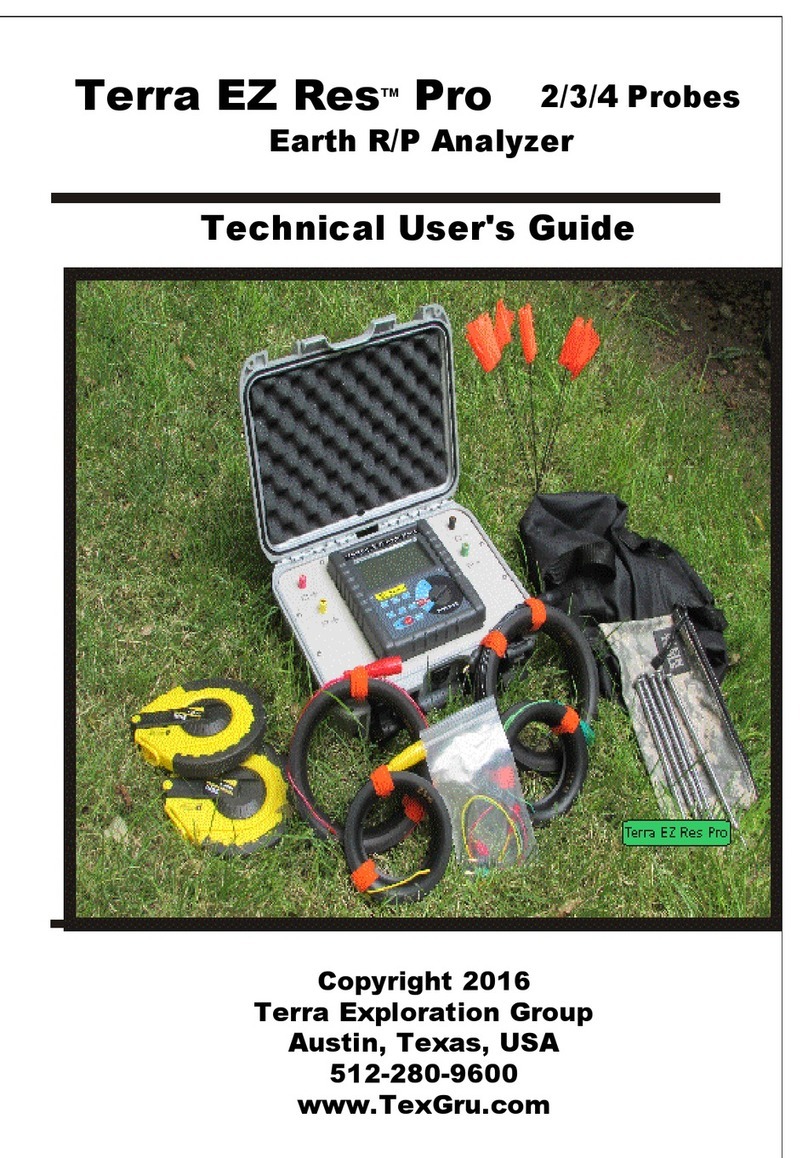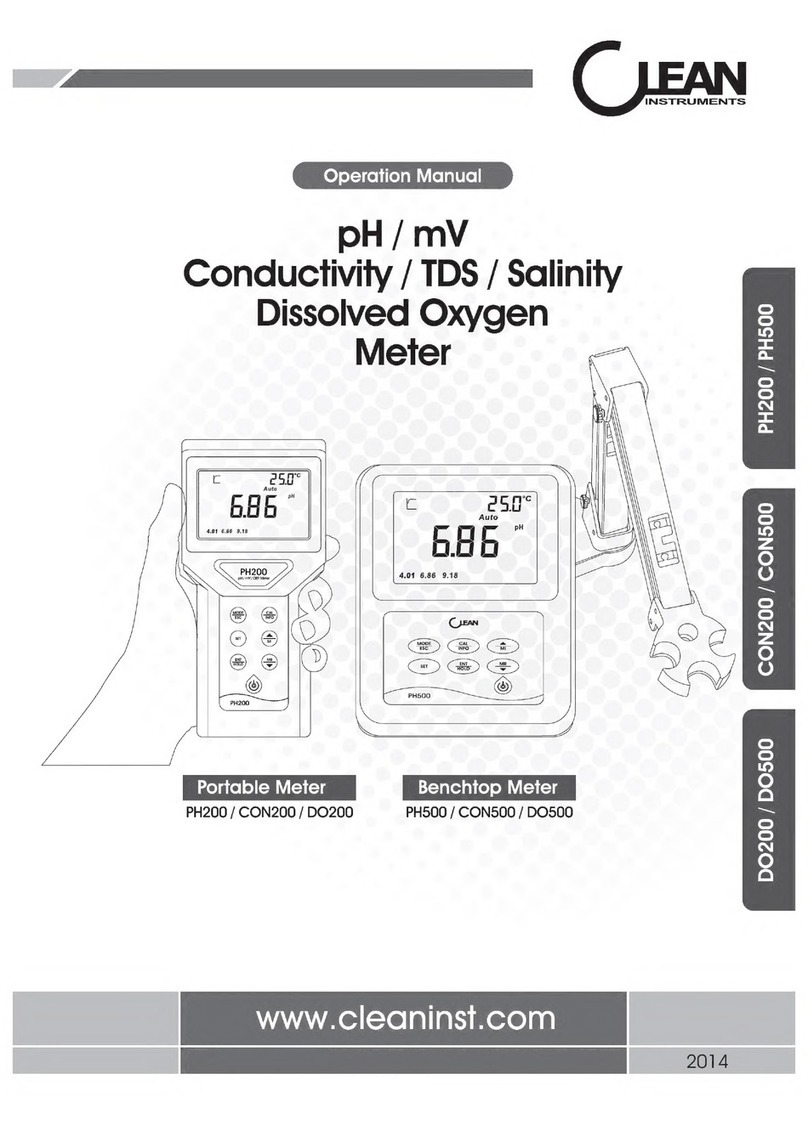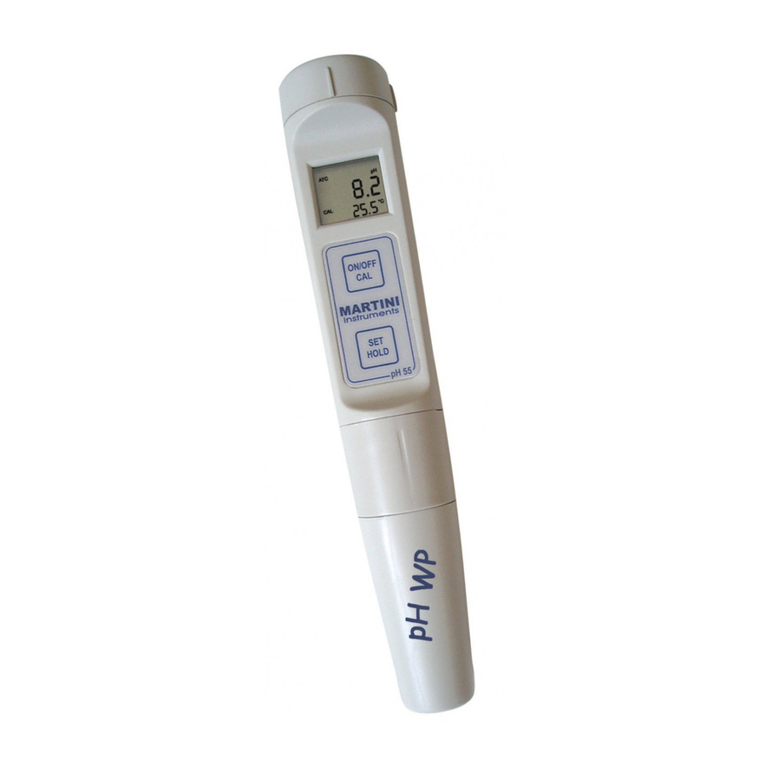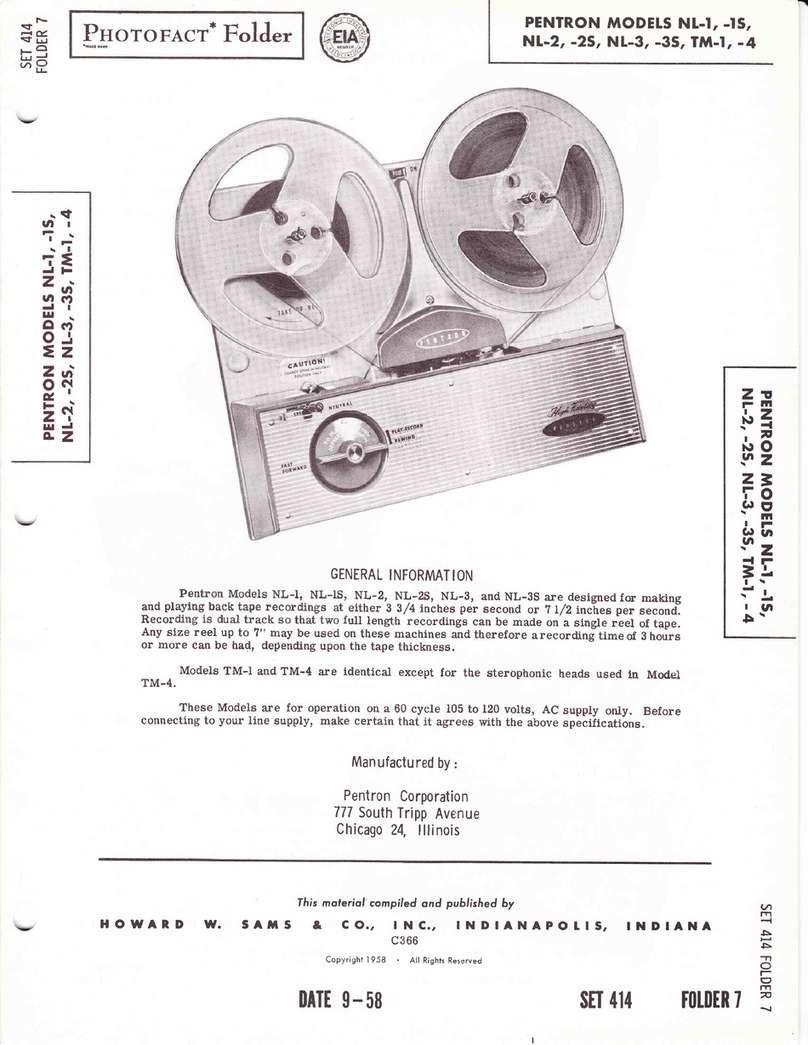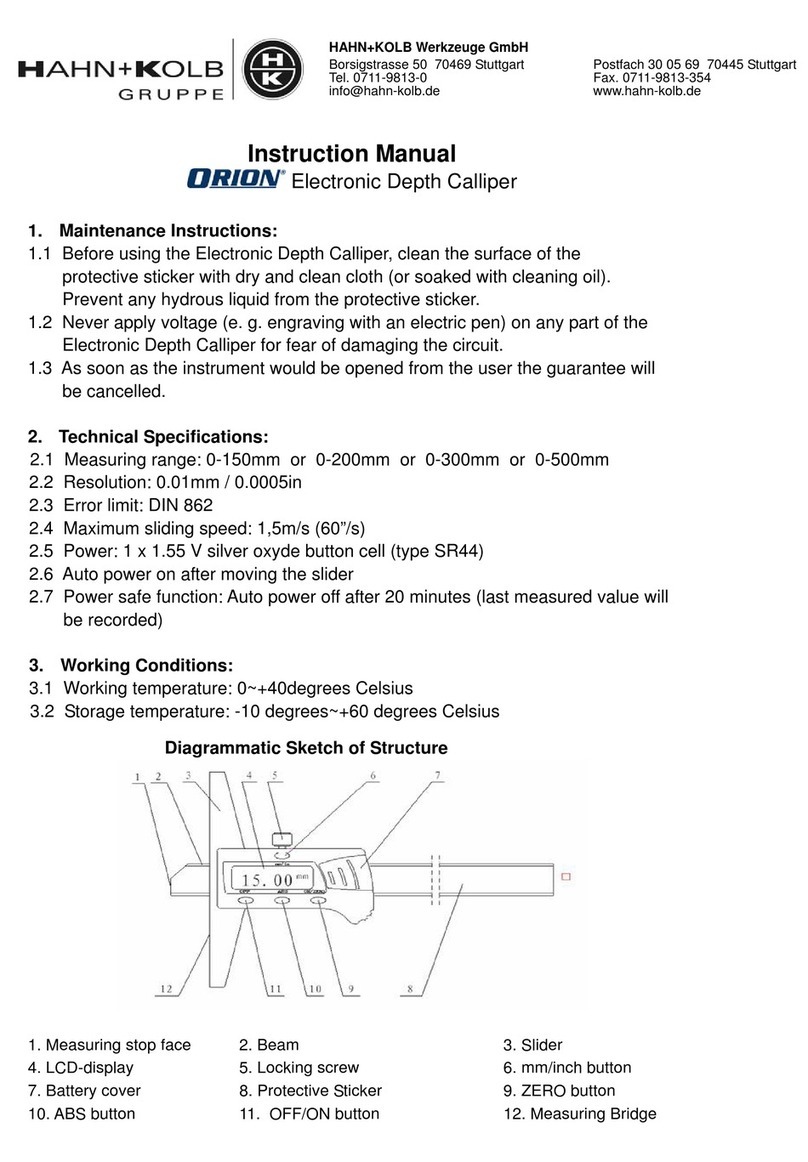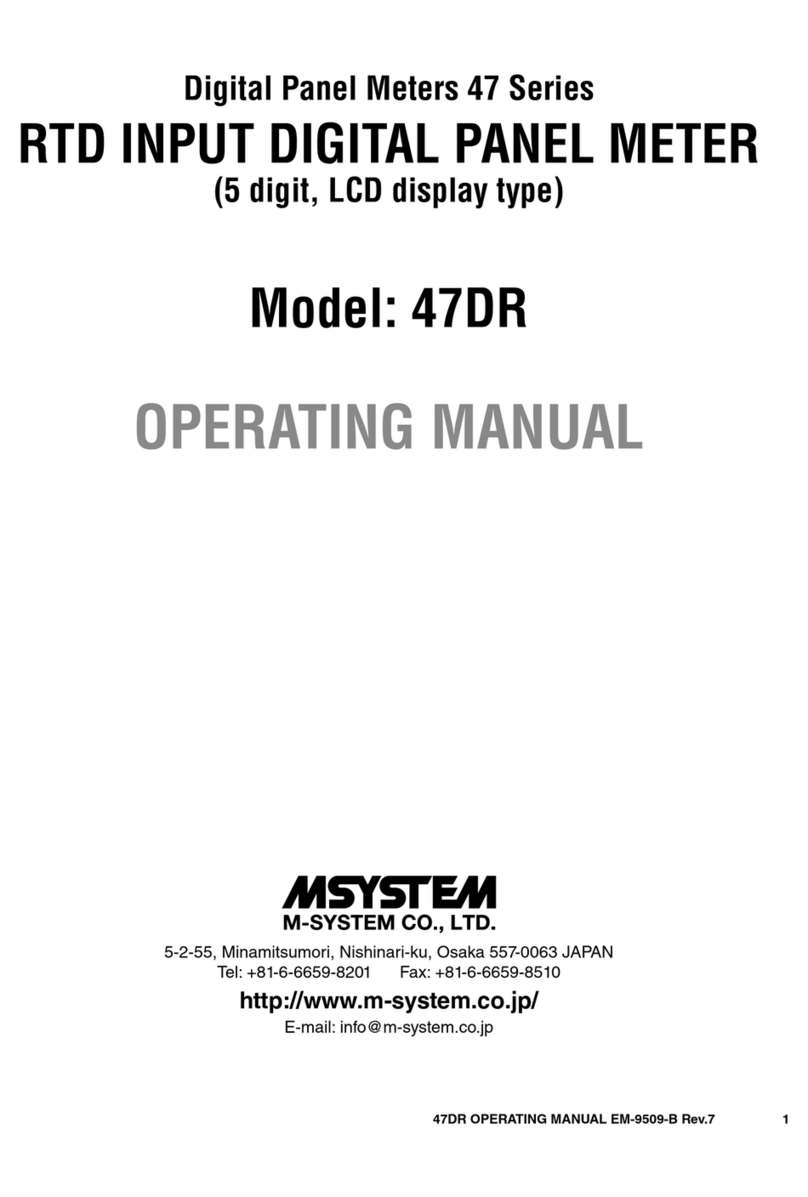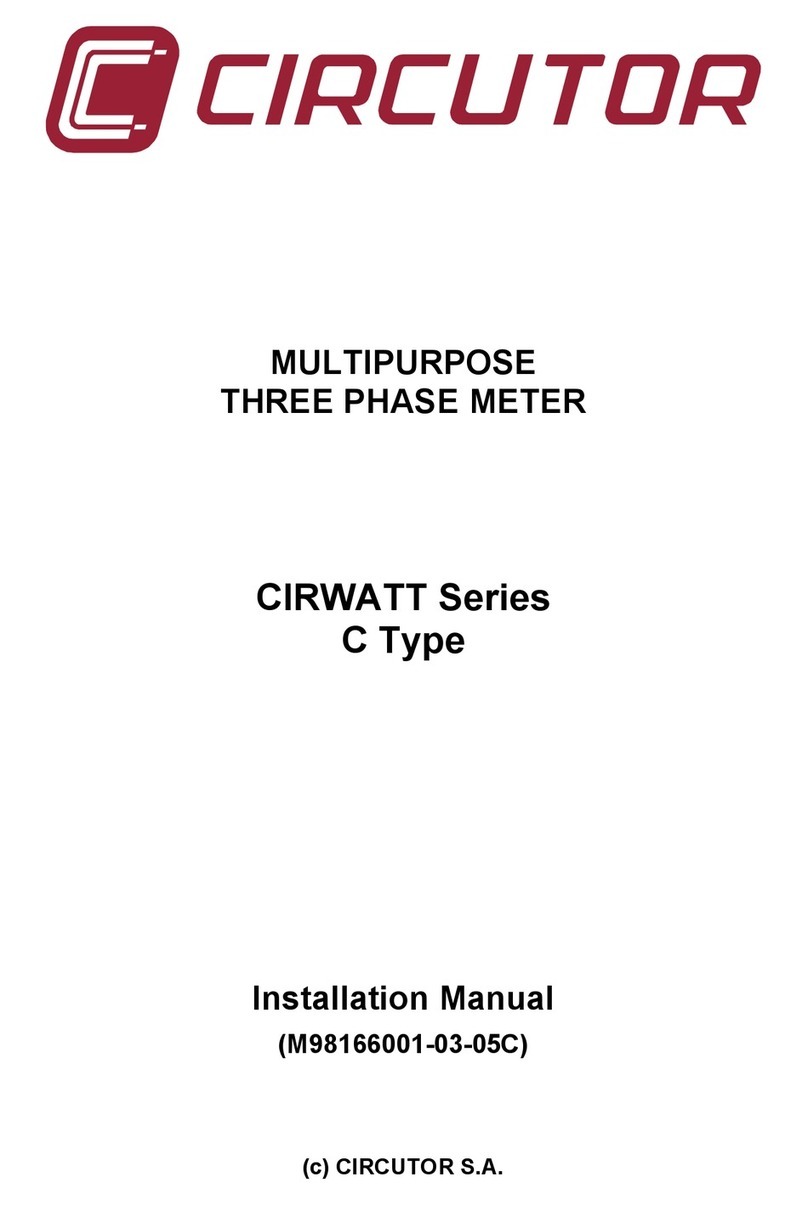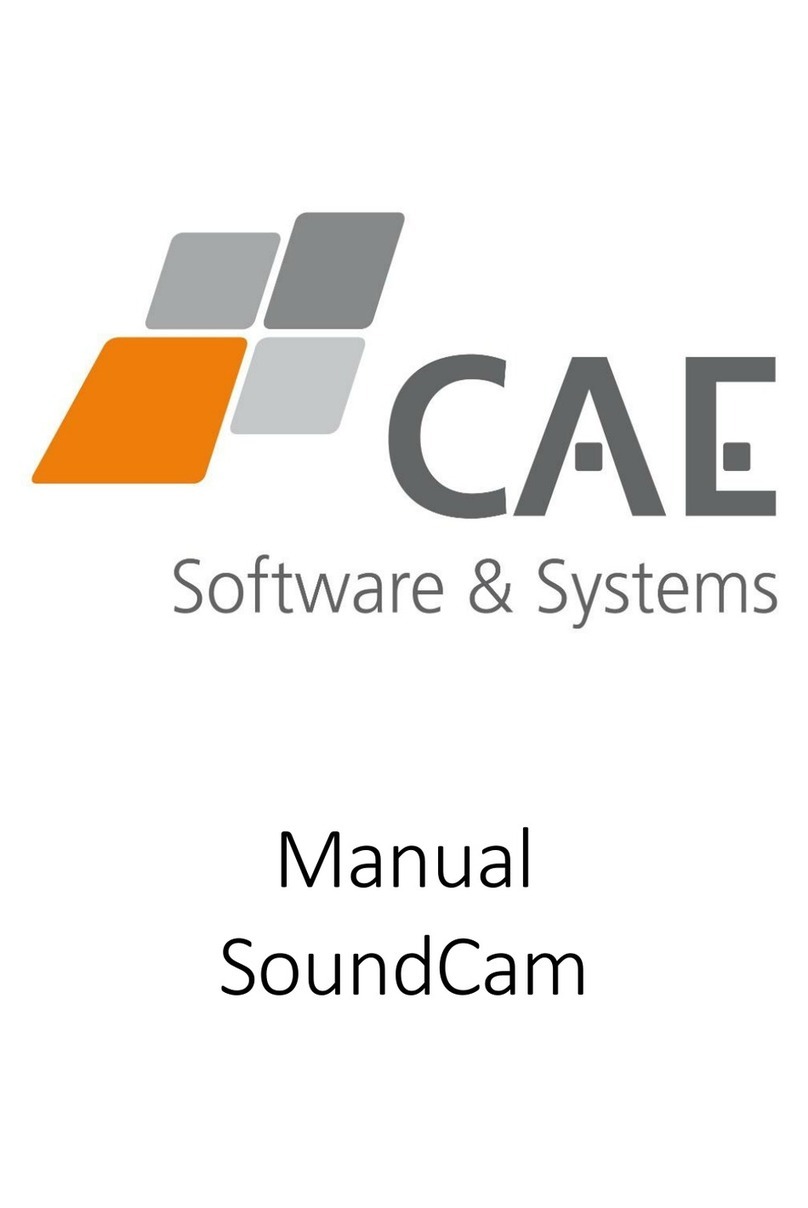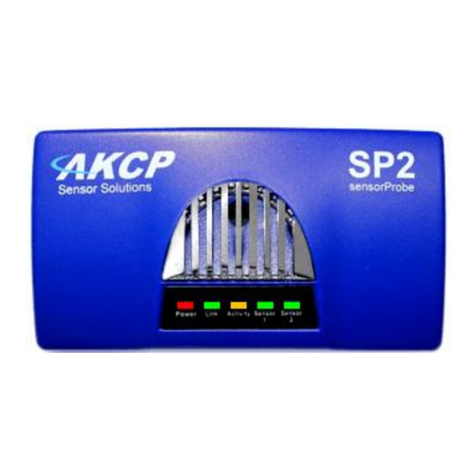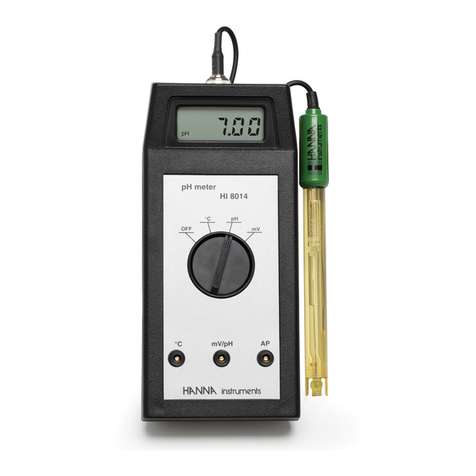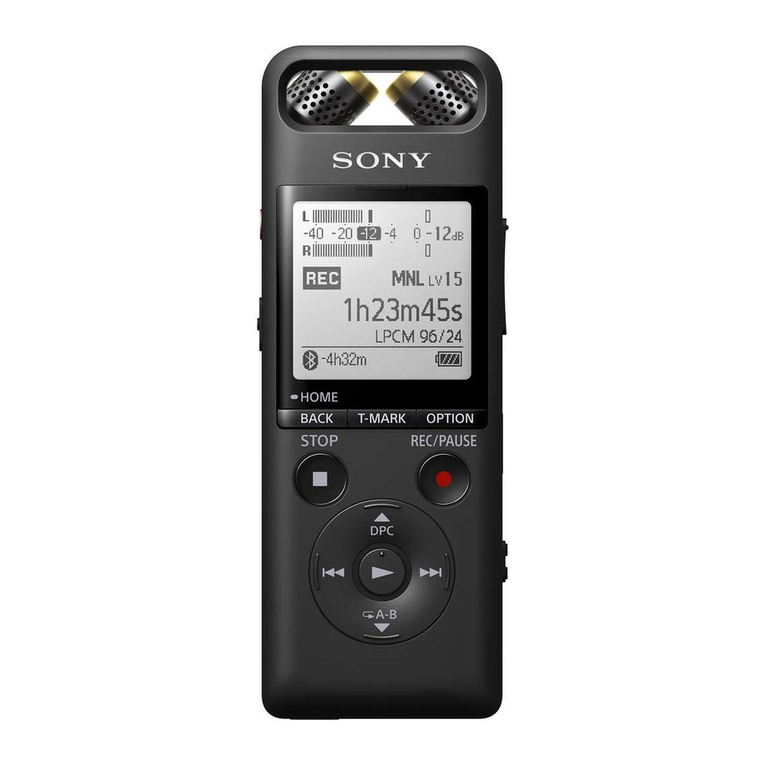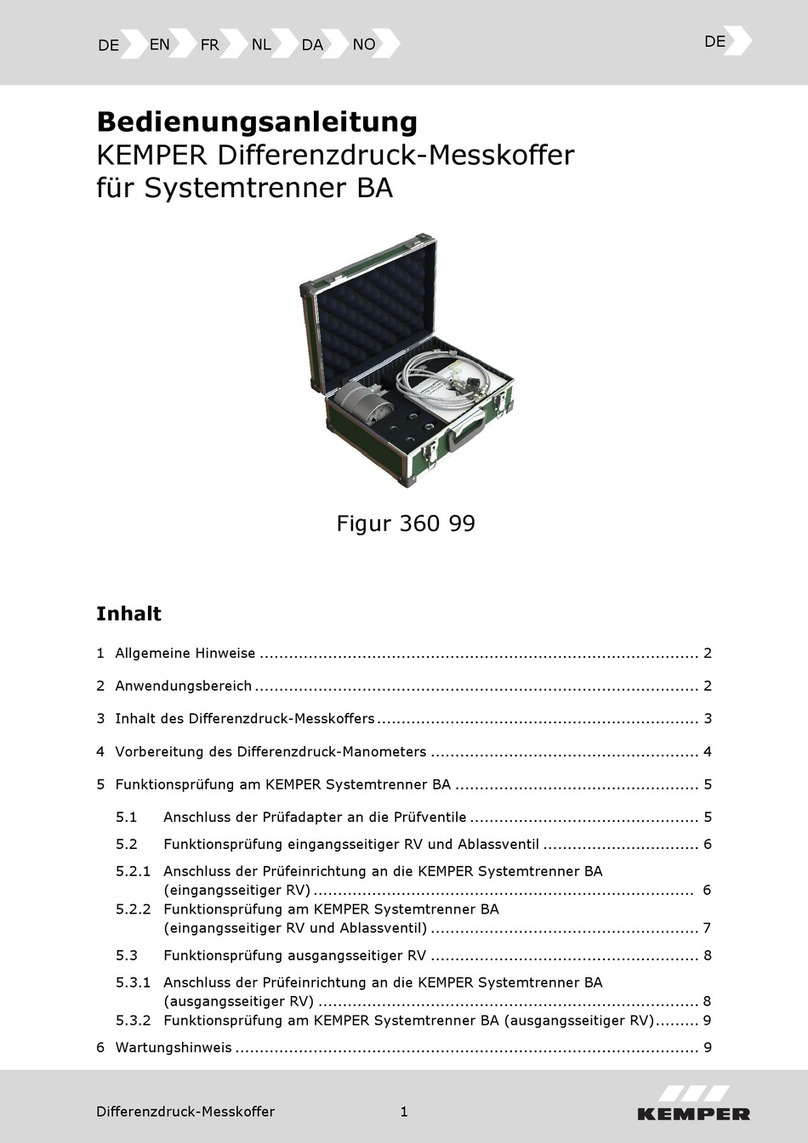Terra Exploration Group EZ Res Pro User manual

Terra EZ Res Pro 2,3 and 4 Probes
TM
Earth R/P Analyzer
Easy Resistivity User’s Guide
Terra EZ Res Pro
Copyright 2016
Terra Exploration Group
Austin, Texas USA
512-280-9600
WWW.TexGru.com

Table of Contents
Page 1……Introduction; Warning; General Provisions
Page 2……How Resistivity Works; Two-probe array
Page 3……Two-probe array continuation
Page 4……How-to examples; How to find cave/tunnel
Page 5……How to find water
Page 6……How to find metallic mineral veins or large metal
Cache
Page 7……Four Probe Arrays: Wenner, Schlumberger, Dipole-
Dipole
Page 7……Wenner Array
Page 8……Schlumberger Array
Page 9……Dipole-Dipole Array
Page 10…..Battery Replacement
Important Notices:
1. This User’s Guide is intended to provide a general understanding of soil resistivity and
and how to conduct soil resistivity surveys. Another smaller booklet User’s Guide is also
included, which offers in-depth technical information about the Terra EZ ResTM Pro and
in-depth information about earth resistance and earth voltage. You should read and
understand the small booklet User’s Guide as well as this Easy Resistivity User’s
Guide to receive the most from this powerful and valuable instrument.
2. The main electronics unit, set into the face plate of the protective case is removable to
replace batteries or to use as a stand-alone unit. For example, if you need to carry the
EZ Res to a remote site where volume and weight are factors, the main unit can be easily
removed to carry in a small backpack. To remove the main unit, gently lift the front edge
of the unit out of the face plate of the protective case and pull forward to clear the four
plugs connected to the top of the unit. Disconnect the four plugs. To use the unit in
stand-alone mode, connect the corresponding colored resistivity wire/plug combination
into the sockets at the top of the unit and operate normally. The alphabetic symbols
shown with the sockets at the top of the unit relate to the small booklet’s references for
Earth Voltage and Resistance.
3. The Terra EZ Res Pro (unit) is warranted against defects in materials and
workmanship for one year from date of purchase. Terra Exploration Group (TexGru)
may, at its’ discretion, repair or replace defective product under this warranty. Incidental
or other damage while unit is out of TexGru control is not covered under this warranty.
Submit warranty information as shown in the included Warranty Information sheet.

Terra EZ ResTM Pro---Easy Resistivity Guide
Thank you for purchasing the Terra EZ Res Pro, the easiest-to-use, yet, very
sophisticated earth resistivity (and resistance) scanner. The complete package includes
the electronic host unit within a special protective waterproof case. Contained within a
black barrel zippered bag are the following: red and black wires (50 meters each), yellow
and green wires (25 meters each), two short jumper wire sets, five probes in a canvas
zipper bag, 10 marking flags and two-50 meter measuring tapes. For airline travel, the
protective case with the electronic host unit may be easily carried on-board as a carry-on,
while the separate black bag with the wires and accessories can be packed in checked
luggage. The five probes are simple steel landscaping spikes---if lost or worn out, they
are easily replaced at hardware stores. Optional Voxler earth imaging software and a
formulated spreadsheet to seamlessly load scan data into the software are available from
Terra Exploration Group.
Warning
For best results, thoroughly read and completely understand this Easy Resistivity
User's Guide.
The Terra EZ Res Pro conforms to IEC61010 in design, production and
testing.
Under all circumstances, pay special attention to the safe use of this device.
Avoid nearby use of high-frequency signal generators like mobile phones to
prevent electrical interference errors during device
operation.
Observe warnings and symbols shown on the device.
Make sure that device and accessories are in good working order before use.
Do not use if there are broken parts or exposed areas of test wires. Do not touch
probes while measurement is in progress---risk of electrical shock!!!!
During measurement, do not touch bare conductors or circuits under
measurement.
Before measurement, please set rotary FUNCTION switch to desired
measuring position.
Confirm that connector plug of leads have been completely inserted into
device interface.
Do not expose to Earth Voltage exceeding 600V AC or DC.
Do not operate device in the presence of flammables, as a spark spark could
initiate an explosion or fire.
Do not use device if test wires are damaged with uninsulated wire exposed.
Do not expose the device to high temperatures, high humidity or
condensation.
Do not leave device exposed to direct sunlight for extended periods to avoid
excessive heating of electronics.
For battery replacement, remove testing wire from device interface, and make
sure that rotary FUNCTION switch is in “OFF” position.
Dispose of used batteries in an appropriate manner.
When the meter displays battery low voltage symbol, replace batteries.
Page 1

A. General Provisions of This Guide:
This guide will provide instruction in the general use and understanding of earth
resistivity. It will concentrate on and show how to conduct two-probe resistivity arrays.
Under the four probe category, it will give a basic understanding of Wenner,
Schlumberger and Dipole-Dipole Resistivity arrays. This guide will show how to conduct
resistivity scans in the search for caves/tunnels, water, large metal caches and/or metallic
mineral veins.The analysis of resistivity results is very much a quest for anomalies.
Whether one is looking for caves/tunnels, water, large metal caches and/or metallic
mineral veins, anomalies and their identification are sought---a significant difference from
what is seen at any depth within “normal” ground conditions. This guide boils down very
complicated science and mathematics so that resistivity is more easily understood to
provide a comfortable, confident and results-oriented work environment.
B. How Earth Resistivity Works:
Resistivity is the opposite of conductivity. A highly electrically conductive substance will
exhibit low resistivity while the opposite is true for low conductivity substances.
Resistivity is the measure of resistance to electricity flow over varying distances. Higher
electrically conductive substances, like metals for example, will exhibit much lower
resistivity than air (as found in caves/tunnels). Factors that will DECREASE soil
resistivity: (a) High moisture content (b) High soil salinity - more ions to conduct
electricity; (c) Clay minerals. Factors that will INCREASE soil resistivity: (a) Low moisture
content; (b) Low soil salinity; (c) Loose, non-compacted soil/gravel; (d) fractures in dry
rock.
The complete resistivity scan process usually involves many individual scans, requiring
numerous and repeated movements of probes---generally expanding a resistivity line
outwards to achieve greater depth. Depth is generally 52% of the distance between a
given set of probes---this varies slightly according to the type of array utilized and will be
explained later.
Page 2

Two-Probe Resistivity Electricity Flow Pattern
V
X
Y
Z
Read Zone
C-
As shown in the above illustration of a two-probe array, current flows to and from the
probes in all directions horizontally and vertically. As the probes are sequentially placed
farther apart, the electric current goes steadily deeper. To calculate the apparent
resistivity, the EZ Res Pro measures the voltage drop from the current sent from the C+
and C- wires to the current received by the P+ and P- wires. The strongest reading
position is in the center of the probes.
Two probe array:
The two probe array is the most simple to set up and the fastest/easiest to conduct. For
a quick look before possibly following with more complex four-probe arrays, the two
probe array is the best way to start a serious resistivity study. (See following cross-
section illustration of two probe array):
Page 3

Scan 1
Scan 2
Scan 3
Scan 4
Two-Probe Array
Center Depth = 52% of Distance Between Probes
Charge Zone = 50%-160% of Center Depth
a. Locate the most likely position believed to be directly over the center of your target.
b. Estimate the depth of your target in METERS----for example 10 meters.
c. Multiply the estimated target depth in METERS by 80% to establish the first spacing of
the two probes---10 meters x 80% = 8 meters initial spacing---centered over spot
believed to be directly over the center of the target.Subsequent spacing of probes is
calculated by multiplying the previous spacing by 1.585. Therefore, subsequent spacing
is calculated as follows: #2 = 8m x1.585=12.68m; #3=12.68mx1.585=20m;
#4=20mx1.585=31.70m; #5=31.70mx1.585=50.24m. This system provides a logarithmic
progression of probe spacing so that the center of the second measurement zone
overlaps the first and so on as is required to properly examine the area under study. This
system provides for hitting the estimated target depth on the third spacing of the probes.
d. One of the two probes will be connected via alligator clip to the red long wire, which will
be connected to the red and yellow jumper wire set, which then plugs into to the red and
yellow binding posts on the face of the Terra EZ Res Pro. The second probe will be
connected via alligator clip to the black long wire, which will be connected to the black
and green jumper wire set, which then plugs into to the black and green binding posts on
the face of the Terra EZ Res Pro.
e. After the two probes are in their initial position (hammered solidly into the ground and
water soaked around the probes if the soil is dry) and the wires are connected properly
between the probes and the Terra EZ Res Pro, turn the “FUNCTION” switch from “OFF”
to “P EARTH”. Press “SET” for about three seconds and enter the initial probe spacing in
METERS (do not use feet) by using the “UP” or “DOWN” “ARROW BUTTONS” to select
your probe spacing value in METERS (Meters = Feet/3.28).Press ”START”, and the
LED screen will show measurement calculations in progress through movement of the
indicator on the digital dial. Following each re-spacing of the probes, repeat the process
of entering the new probe spacing in meters. Once each scan is complete, the resulting
“Ohms-Meters” numerical value will be shown on the screen. Save this value to
memory by pressing “MEM” button twice. The EZ Res Pro stores the results of each
scan internally, but it is a good idea to manually record the probe spacing and apparent
resistivity results of each scan for easy and quick field reference. Move the probes out to
the subsequent carefully planned and measured spacing positions (maintain original
center position) and repeat the scan procedure after each new probe placement.
Page 4

C. How-to examples: use of the two-probe array is shown as it is the simplest
array and the fastest/easiest scan to conduct:
1.How to find caves/tunnels: The illustration below shows overhead and cross-section
views of a two-probe resistivity array in a hypothetical search for a cave or tunnel. First,
Control Scans are conducted to determine “NORMAL” soil resistivity at various depths.
Once “NORMAL” conditions are known, Test Scans can be run in the search for a cave
or tunnel. If a very significant increase (vs Control) in apparent resistivity is noted at
some depth as is shown in the following illustration, there is a good possibility that a cave
or tunnel has been found. To improve confidence in the possible cave/tunnel find, rotate
probes alignment 90 degrees (maintaining the same center) and repeat the scans.
Remember the strongest reading comes from the center of the probe spacing so, farther
lateral movement of the moved array (to one side or the other) is warranted in trying to
find higher resistivity numbers. If the array is moved linearly in one direction and the
numbers drop, movement away from the target is indicated. On the other hand, if linear
movement of the array produces higher numbers, movement toward the target is
indicated. Always make sure probes are driven in to the soil within one inch of the probe
head and that firm contact is made with the soil. Wetting (salty water is best) soil around
solidly-placed probes assures good soil/probe contact.
3m@110 Ohms
3m@110 Ohms
4.3m@112 Ohms
4.3m@180 Ohms
6.8m@115 Ohms
6.8m@700 Ohms
10.8m@118 Ohms
10.8m@300 Ohms
17.1m@124 Ohms
17.1m@124 Ohms
Control Scans
Test Scans
Cave/Tunnel
Overhead View
1.5m
2.15m
3.40m
5.40m
8.87m
Test Scans Cross-section View
Significant
Anomaly
Page 5

2.How to find water: The illustration below shows overhead and cross-section views of
a two- probe resistivity array in a hypothetical search for water. The methodology is
exactly the same as explained in the cave/tunnel example with the only difference being
that an indication of water at some depth will exhibit a significant decrease in resistivity
numbers as water is generally more electrically conductive than the surrounding soil.
3m@425 Ohms
4.3m@450 Ohms
4.3m@250 Ohms
6.8m@460Ohms
6.8m @ 90 Ohms
10.8m@480 Ohms
10.8m@280 Ohms
17.1m@500 Ohms
17.1m@500 Ohms
Control Scans
Water
Overhead View
1.5m
2.15m
5.40m
8.87m
Test Scans Cross-section View
Significant
Anomaly
3.40m
Test Scans
3m@425 Ohms
Page 6

3.How to find metallic mineral veins or large metal caches: The illustration below
shows overhead and cross-section views of a two-probe resistivity array in a hypothetical
search for a metallic mineral vein. The methodology is exactly the same as explained in
the water example whereby resistivity at some depth will exhibit a very significant
decrease in resistivity numbers as metallic mineral veins are always more electrically
conductive than the surrounding normal soil.
3m@425 Ohms
3m@425 Ohms
4.3m@450 Ohms
4.3m@250 Ohms
6.8m@460 Ohms
6.8m @ 90 Ohm s
10.8m@480 Ohms
10.8m@280 Ohms
17.1m@500 Ohms
17.1m@500 Ohms
Control Scans
Test Scans
Metallic Mineral Vein
Overhead View
1.5m
2.15m
5.40m
8.87m
Test Scans Cross-section View
Significant
Anomaly
3.40m
Page 7

D. Four probe arrays: Wenner, Schlumberger and Dipole-Dipole
As discussed earlier, four probe arrays yield more precise results than the recommended
procedure of starting with two probe arrays using four wires. The four probe arrays are
also much more difficult and time consuming to conduct. The results of four probe arrays
can be dramatically enhanced with earth-imaging software such as Voxler, AGI Earth
Imager and Zond---available from the individual software producers.
1.Wenner Array: Four probes with “a” spacing of equal distances with all in a straight
line. The red and black wires are connected to the outside probes. The yellow and
green wires are connected to the inside probes. Multiple test scans should be conducted
to determine “normal” ground conditions at various depths. After each scan is completed,
all probes are moved farther apart (maintain original center point) each time by a factor of
1.585X previous spread and a new scan is conducted. The EZ Res Pro stores the
results of each scan internally, but it is a good idea to manually record the probe spacing
and apparent resistivity results of each scan for easy and quick reference. As in any
resistivity scan, the search is for noticeable anomalies from “normal”.
C+ P+ P- C-
aa
a
V
Wenner Array Electricity Flow Pattern
Wenner Array
Electric Current Zones
Electric Voltage Zones and Primary Diagnostic Read Zones
(between P+ and P- probes)
Probe
C-
Read Zone Depth: Center =
“a” Spacing X .519
Top = Center X .50
Bottom = Center X 1.60
C+
C+
C+
C-
C-
C-
P+
P+
P+
P-
P-
P-
Scan 1
Scan 2
Scan 3
a
1
a
2
a
2
a
3
a
3
a
3
a
2
a
1
a
1
Page 8

2.Schlumberger Array:Four probes with two center probes (P+ and P-) spaced “a” distance apart.
The two outside probes (C+ and C-) are spaced at least 5X the “a” spacing from the closest inside
probe---all in a straight line. The red and black wires are connected to the outside probes. The yellow
and green wires are connected to the inside probes. Multiple test scans should be conducted to
determine “normal” ground conditions at various depths. After each scan is completed, only the outside
probes are moved farther apart (maintain original center point) each time by a factor of 1.585X previous
spread and a new scan is conducted. The EZ Res Pro stores the results of each scan internally, but it
is a good idea to manually record the probe spacing and apparent resistivity results of each scan for
easy and quick reference. As in any resistivity scan, the search is for noticeable anomalies from
“normal”.
Schlumberger Electricity Flow Pattern
C+ P+ P- C-
>5a >5a
a
V
Schlumberger Array
C+
C+
C+
C+
C-
C-
C-
C-
C-
1.585 X Previous
1.585 X Previous
1.585 X Previous
1.585 X Previous
P+
P+
P+
P+
P+
P-
P-
P-
P-
Scan 1
Scan 2
Scan 3
Same Fixed Position
All Scans *
Read Zone Depth: Center = to
and
Spacing X .57
Top = Center X .50
Bottom = Center X 1.60
Electric Current Zones (between outer probes)
Electric Voltage Zones and Primary Diagnostic Read Zones
(between Probes)
a
a
a
>5a >5a
Page 9

3.Dipole-Dipole Array:Four probes with two current probes (C+ and C-) spaced “a” distance apart.
The remaining two probes (P+ and P-) are also initially spaced “a” distance apart---all three initial
spacing of probes is equal---all in a straight line. The red and black wires are connected to one set of
outside probes. The yellow and green wires are connected to the remaining two probes. Multiple test
scans should be conducted to determine “normal” ground conditions at various depths. After each scan
is completed, only the P+ and P- outside probes are moved farther apart (maintain original positions of
C+ and C- probes for all scans). New “a” spacing between C-, P+ and P- for subsequent scans is
determined by a by a factor of 1.585X previous spread and a new scan is conducted. The EZ Res Pro
stores the results of each scan internally, but it is a good idea to manually record the probe spacing and
apparent resistivity results of each scan for easy and quick reference. As in any resistivity scan, the
search is for noticeable anomalies from “normal”.
Dipole-Dipole Electricity Flow Pattern
C+ P+ P-
C-
V
Dipole-Dipole Array
C+
C+
C+
C-
C-
C-
C-
C-
aaa
a
a
1.585a
1.585xPrevious
a
a
P+
P+
P+
P+
P+
P-
P-
P-
Scan 1
Scan 2
Scan 3
Same Fixed Position
All Scans
Read Zone Depth: Center = To
and
Spacing X .519
Top = Center X .50
Bottom = Center X 1.60
Electric Current Zones (between outer probes)
Diagnostic Read Zones (between Probes)
Page 10

E. Battery Replacement
If main unit is in its’ normal position nested into the face plate of the
protective case, gently lift the forward edge of the unit and pull it out of
the face plate. See back side of unit. Remove four battery compartment
screws and cover to expose batteries.
Caution:
1. Do not replace batteries around flammable products.
2. Do not replace batteries with FUNCTION switch out of OFF position.
3. Observe correct battery polarity.
4. Use only high quality alkaline batteries.
5. Remove depleted batteries and install new batteries.
6. Replace battery cover and re-tighten screws.
7. Reinstall four colored plugs into correspondingly colored sockets in top of main unit.
8. Reinstall main unit into cut-out in face plate of protective case.
Page 11

Other manuals for EZ Res Pro
1
Table of contents
Other Terra Exploration Group Measuring Instrument manuals
Popular Measuring Instrument manuals by other brands
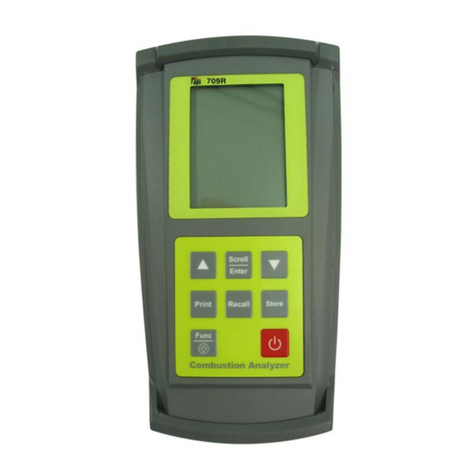
TPI
TPI 709R instruction manual
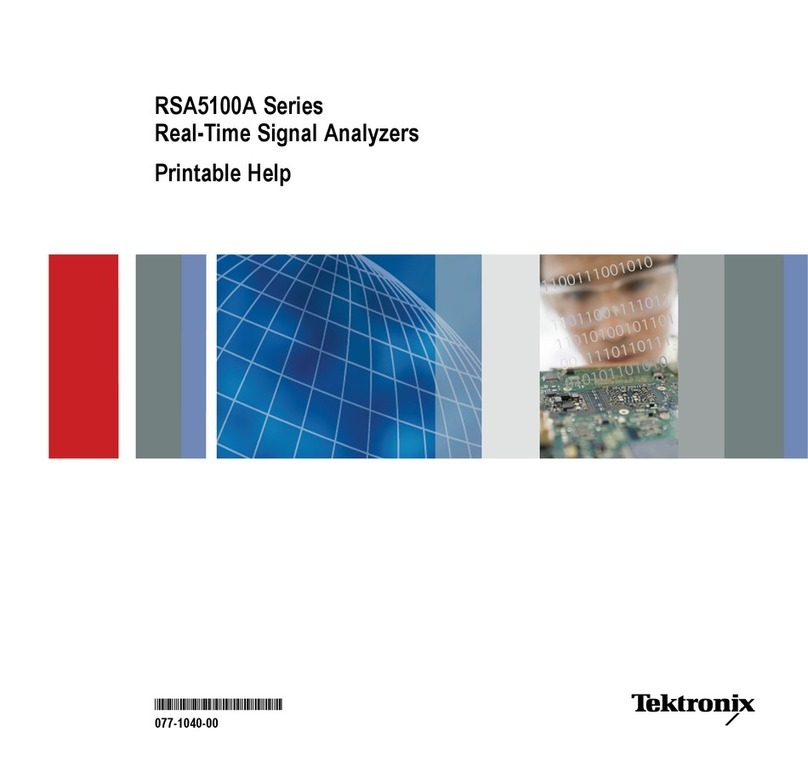
Tektronix
Tektronix RSA5100A Series Printable help
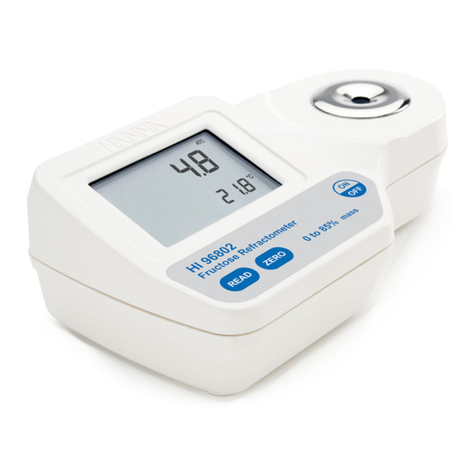
Hanna Instruments
Hanna Instruments HI96802 instruction manual
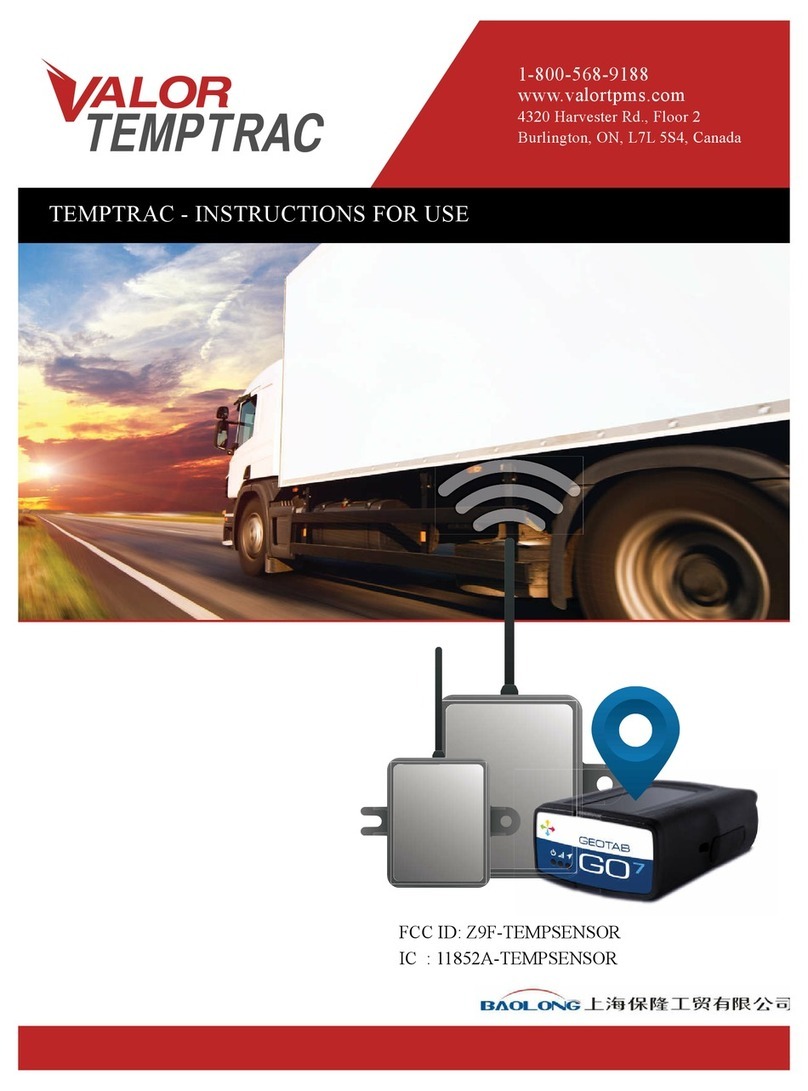
Valor
Valor Temptrac Instructions for use

SATO KEIRYOKI
SATO KEIRYOKI 7820-00 instruction manual
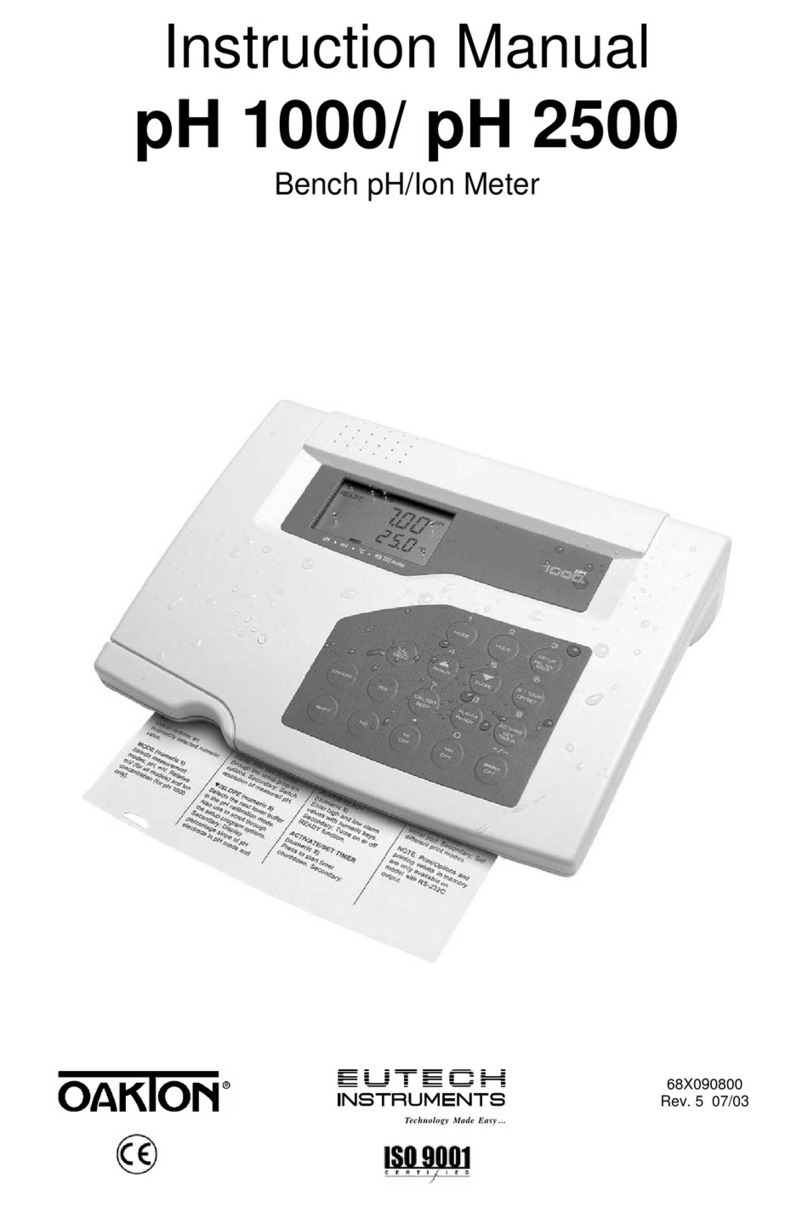
EUTECH INSTRUMENTS
EUTECH INSTRUMENTS CYBERSCAN PH 10002500 PHION METER instruction manual
